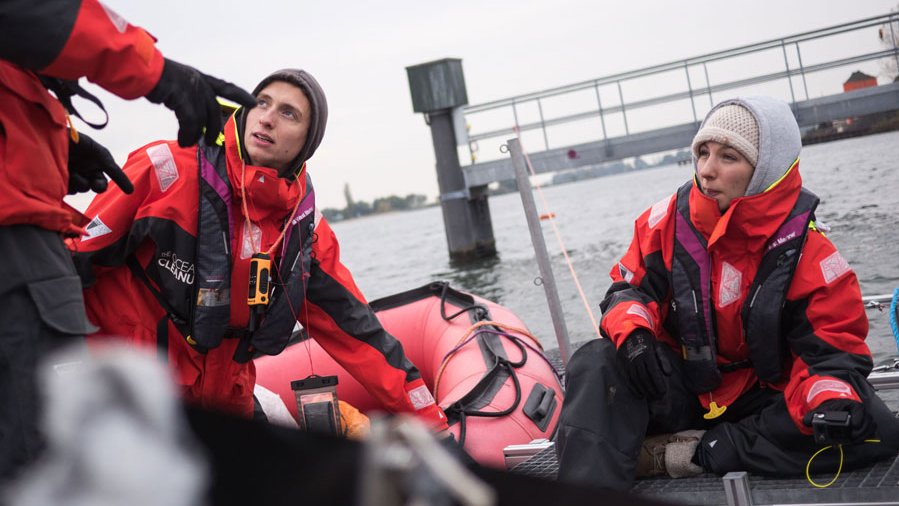Plastic waste in the sea
Making the world a little bit better

What is The Ocean Cleanup?
Hannah Maral: The Ocean Cleanup was founded by Boyan Slat, a young Dutchman, aiming to get rid of plastic waste in the Pacific. Boyan came up with the idea for his cleaning system as a student. Then, he founded The Ocean Cleanup. There are currently more than 70 people working there, trying to figure out how to best implement his idea.
How does Boyan’s idea work exactly?
There are tons of plastic waste in the Pacific, some deliberately disposed – but a large proportion of plastic also lands in the rivers and seas due to environmental disasters or Tsunamis. The big problem is that this is not about one dense accumulation, but about small parts and particles floating in the water, scattered across many square miles.
Why is that such a big problem?
It would be very uneconomical and not even ecological to pick up all the pieces individually. Boyan’s idea is that of a floating barrier, which – due to its construction – moves slower than the water, so that the particles form a more compact mass. Then, it’s easier to pick them up and, perhaps, to have them recycled.
How come you joined The Ocean Cleanup?
I was a Bachelor’s student of Environmental Engineering at TUM, and I had been actively involved in environmental activism for almost ten years. I subscribed to several forums on the topic, and that’s how I learned about The Ocean Cleanup. After completing my Bachelor’s studies, I wanted to gain some practical experience and to get a better idea of what I could do with my course of studies later on. Thus, I applied for an internship.
You worked in Holland for seven months. What exactly was your job?
I served as a mediator between the team of marine biologists and oceanographers and the engineers. We investigated how the technology affects the Pacific ecosystem. Another task – after categorizing several samples from the Pacific – was to find out where and in which depth they can be found, depending on their size and material, as well as on the weather conditions. The results help to decide where to clean up without causing too many emissions.
What are your plans for the time after your Master’s studies? Can you imagine returning to The Ocean Cleanup?
I would like to find a way to use what I learned during my studies to make a difference, regarding humanitarian or ecological issues. I focused on water, and there are many options for practical engineering work, such as industrial water treatment, hydraulic engineering, or hydromechanics. I could also imagine working for The Ocean Cleanup again, as the project had a great atmosphere to it: we were all working on a fantastic idea together, and everyone was full of energy and passion.
(Interview: Sabrina Czechofsky)
Hannah Maral (25, from Heidelberg) is a Master’s student of Civil Engineering at TUM, in her 4th semester. She enjoys spending her free time outside. In Munich, she often goes mountaineering. She likes to go riding and has her own horse at her parent’s place.
More information:
www.theoceancleanup.com
Müllstrudel ist mehr als viermal so groß wie Deutschland (SPIEGEL ONLINE)